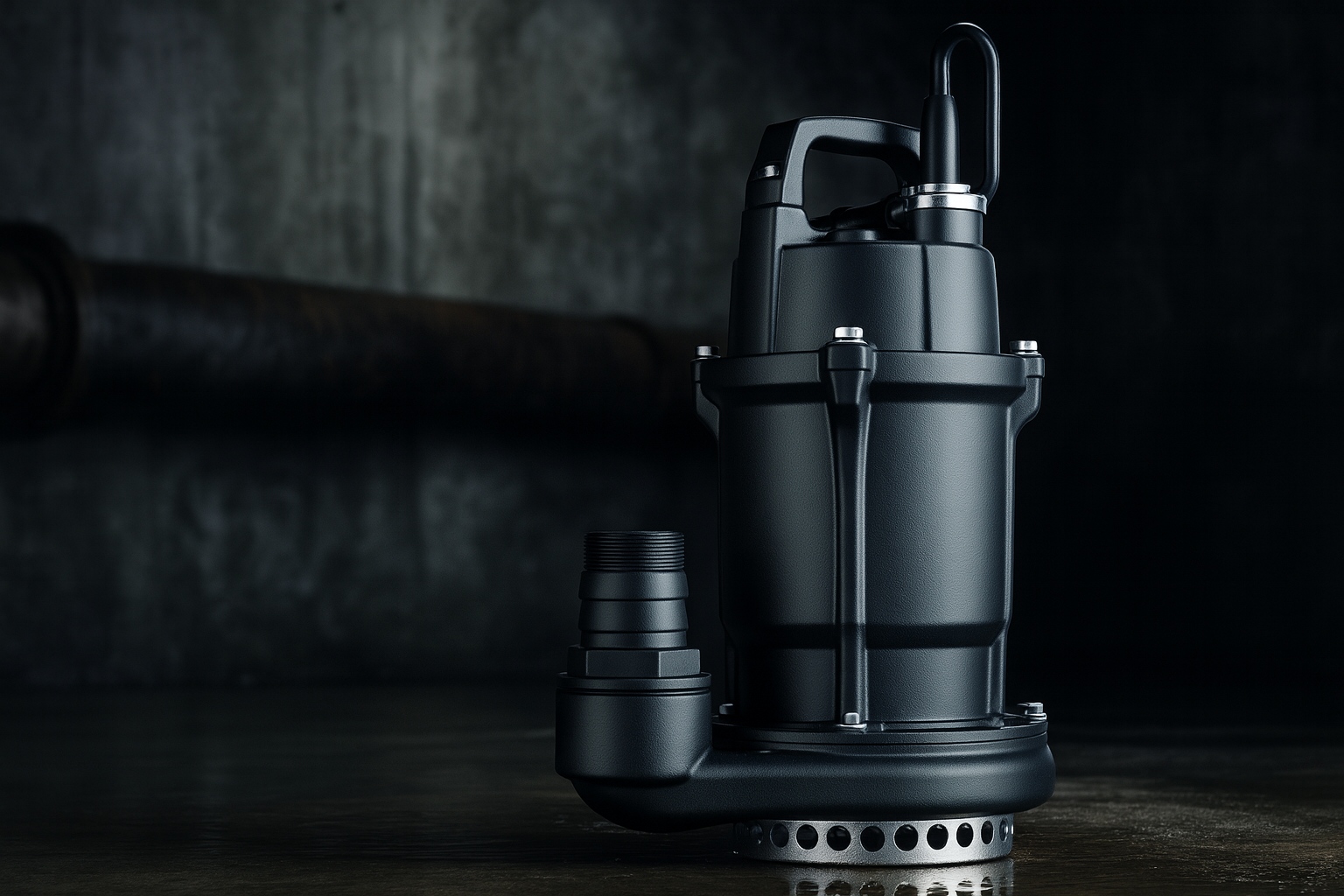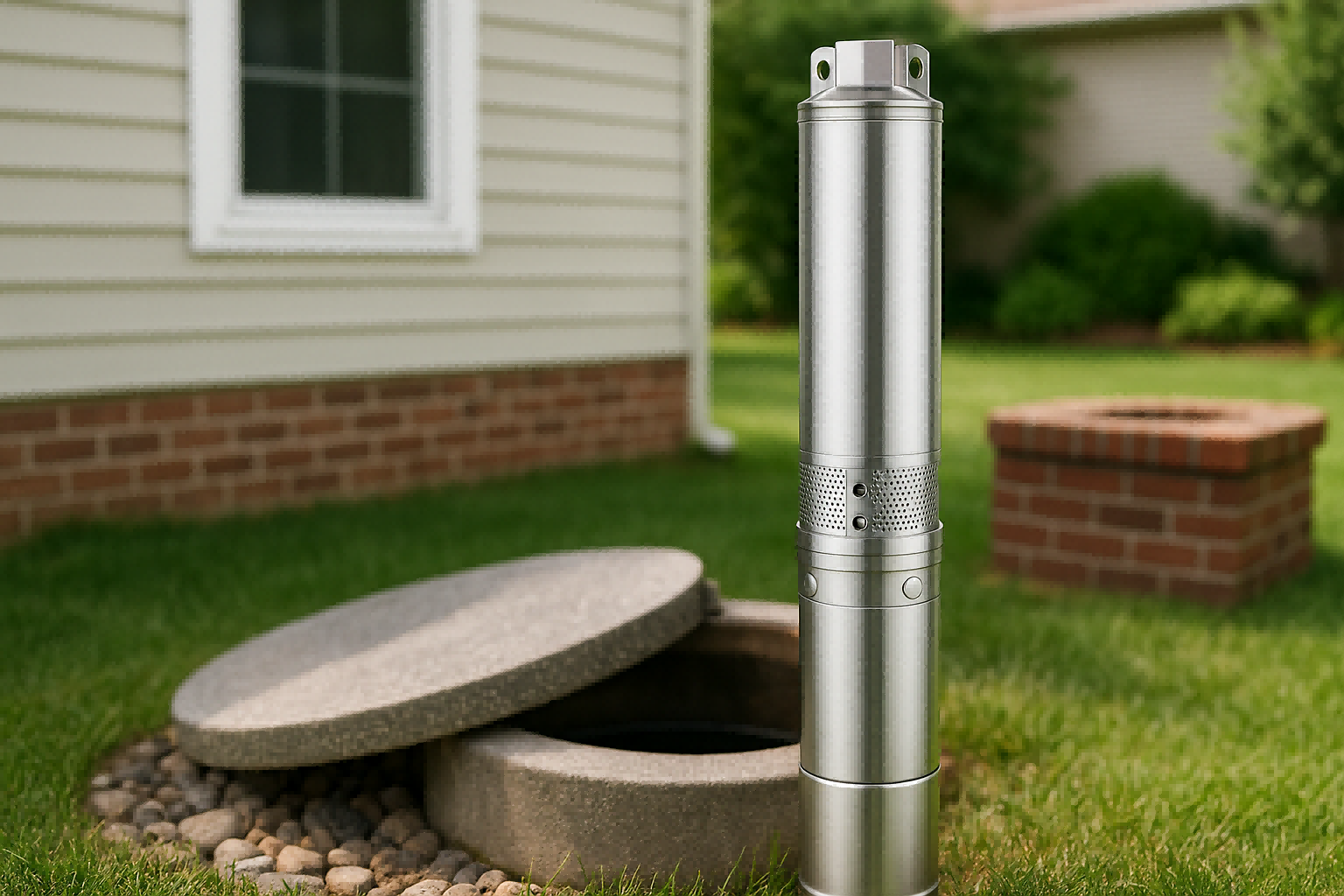Struggling to get strong, consistent water flow from your tank?
The wrong pump leads to weak showers, long fill times, and wasted electricity, turning your water-saving solution into a daily frustration.
To size your pump, calculate the total flow rate (LPM) you need by adding up all taps you might use at once.
You also need enough "head pressure" to push water over distance and up to higher floors, ensuring strong flow everywhere.

Choosing the perfect pump feels technical and complex.
Many homeowners worry about buying a pump that's too weak or one that's an oversized, energy-hungry monster.
But you don't need to be an engineer to get it right.
By breaking down your needs into a few key factors, you can confidently select a pump that delivers perfect pressure without breaking the bank.
Let’s walk through the essential considerations to ensure your system works flawlessly.
How Will You Use Your Rainwater?
Wondering if a simple garden pump is enough for your home?
Using the wrong type can result in contamination or insufficient pressure, making your system ineffective.
For garden-only use, a basic transfer pump often works.
For whole-house supply, you need an automatic pressure pump that's certified safe for drinking water and can handle multiple taps running at once.
The first step in choosing a pump is defining its job.
A pump’s purpose is the most important factor dictating its required features, power, and type.
A pump intended solely for watering plants has very different requirements than one plumbed into your home's water supply, which must provide safe, reliable pressure for showers, toilets, and drinking water.
Understanding this distinction is critical because it narrows down your options immediately and ensures you are comparing the right kinds of products for your specific application.
Pump for Garden Use Only
A pump dedicated to garden and irrigation tasks is the simplest application.
Its main job is to move water from your tank to your hoses or sprinkler systems.
These are often called "transfer pumps."
For a small garden with one or two hoses that you use one at a time, a basic pump with a lower flow rate is perfectly adequate.
You might only need a model that can handle 2-3 taps.
However, if you have a larger property with multiple sprinklers or irrigation zones that run simultaneously, you'll need a more powerful pump.
In this case, look for pumps that can service 7-12 taps to ensure each zone gets enough water pressure to operate effectively.
These pumps are generally not automatic, meaning you switch them on and off manually when you need to water.
Pump for Your House Water Supply
When you connect a rainwater tank to your home's plumbing, the requirements become much stricter.
The pump must provide water that is safe for drinking, cleaning, and bathing.
This means the pump itself must be made from materials that won't contaminate the water.
This category of pump is known as an "automatic pressure pump."
It is equipped with a controller that senses a drop in pressure when you turn on a tap.
This sensor automatically starts the pump to supply water and then shuts it off when the tap is closed.
This automation is essential for household use, as you don't want to manually switch on the pump every time you need water.
The size of this pump will depend entirely on how many taps you expect to have open at the same time.
Calculating Your Required Flow Rate and Pressure
Worried you'll buy a pump that can't even handle two taps at once?
Ending up with a weak trickle during your morning shower is a common, frustrating mistake.
To avoid this, add up the flow rates for all fixtures you need to run simultaneously.
Match this total to the pump’s “Max LPM” (Litres Per Minute) spec to ensure it can meet your peak demand.
Once you know the pump's main purpose, the next step is to calculate the performance you need.
This is broken down into two key metrics: flow rate and pressure (or "head").
Flow rate determines how much water comes out of your taps, while pressure determines how forcefully it comes out.
Getting these numbers right is the secret to a system that feels just like, or even better than, mains water pressure.
A common mistake is to only look at the maximum flow rate, but you need to consider how that flow is affected by the pressure required.
Understanding Flow Rate (LPM)
Flow rate is measured in Litres Per Minute (LPM).
It tells you the volume of water a pump can move in one minute.
Every fixture in your home has a typical flow rate.
To determine your total need, you must estimate your peak usage.
Think about a typical morning: someone might be showering while a toilet is refilling and the kitchen tap is running.
You need a pump that can supply all three outlets at once without a noticeable drop in performance.
Use this table as a guide to add up your requirements:
| Appliance / Fixture | Typical Flow Rate (LPM) - Water Saving | Typical Flow Rate (LPM) - Older Models |
|---|---|---|
| Shower Head | 7 - 9 LPM | 15 - 20 LPM |
| Kitchen/Bathroom Tap | 4 - 6 LPM | 10 - 15 LPM |
| Toilet Cistern | 4 - 6 LPM | 9 - 13 LPM |
| Washing Machine | 10 - 15 LPM | 15 - 20 LPM |
| Garden Hose / Tap | 15 - 20 LPM | 15 - 20 LPM |
For example, if you want to run a shower (9 LPM) and a kitchen tap (6 LPM) at the same time, you need a pump that can deliver at least 15 LPM at your required pressure.
It's always wise to oversize slightly, so a pump with a max flow of 40-60 LPM would comfortably handle this and other small uses.
Understanding Head Pressure
"Head" or "head pressure" is the term for the vertical height a pump can move water.
It's a measure of its power to overcome gravity and friction in the pipes.
It is typically measured in meters.
Every pump has a performance curve that shows its flow rate at different head heights.
As the head pressure requirement increases, the flow rate (LPM) the pump can deliver decreases.
To calculate your required head, consider these factors:
- Vertical Lift: The height from the pump to the highest outlet (e.g., a second-story shower head).
- Friction Loss: Resistance from pipes, bends, and fittings. As a rough rule, every 10 meters of horizontal pipe length is equivalent to 1 meter of head. Long, narrow pipes create more friction.
- Operating Pressure: The pressure you want at the tap. A standard tap needs about 20-30 meters (2-3 bar) of pressure to feel strong.
Calculation Example:
- Height to second-floor shower: 4 meters
- Horizontal pipe run: 30 meters (equals 3 meters of head)
- Desired tap pressure: 25 meters
- Total Head Required: 4 + 3 + 25 = 32 meters.
You would need a pump that can deliver your desired flow rate (e.g., 15 LPM) at a head of 32 meters.
You must check the pump's specific flow chart to confirm it meets this requirement.
Does Distance, Height, and Pipe Size Matter?
Think the distance from your tank to your house doesn't matter?
A long or narrow pipe can strangle your water flow, leaving you with a dribble from your taps.
Yes, it matters immensely.
Longer distances, uphill climbs, and undersized pipes all increase "head pressure" and friction, demanding a more powerful, often multistage, pump to maintain strong and consistent water pressure throughout your home.
The physical layout of your rainwater harvesting system has a massive impact on pump selection.
It's not enough to simply place a pump next to the tank and expect great results.
The journey the water must take from the tank to the final tap is filled with challenges like gravity and friction, which the pump must be powerful enough to overcome.
Ignoring these factors is a common cause of post-installation disappointment, where a perfectly good pump underperforms simply because it was mismatched to a demanding installation.
The Impact of Distance and Elevation
The further a pump has to push water, the more energy it loses to friction within the pipes.
The higher it has to lift water, the more it has to fight against gravity.
These two forces combine to create "total dynamic head," a key factor in pump sizing.
-
Multi-Storey Homes: If you need to supply water to a second or third floor, you need a pump with a high head rating. A pump must generate enough pressure to lift the water to that height and still have enough leftover pressure to provide a strong flow from the tap. Pumps rated for "20-50 meters" of head are typically needed for these applications.
-
Tanks Far From the House: If your tank is located a hundred feet away in the garden, the long pipe run creates significant friction loss. This friction acts just like vertical height, forcing the pump to work harder. You will need a more powerful, often "multistage" pump, to overcome this resistance and deliver adequate pressure at the house. Multistage pumps use multiple impellers to build pressure progressively, making them ideal for these high-pressure, long-distance scenarios.
Why Pipe Size is Critical
The diameter of your pipes is just as important as the pump itself.
Using pipes that are too narrow is like trying to breathe through a straw.
Water flow is severely restricted, which kills pressure and forces the pump to work much harder, increasing energy use and causing premature wear.
| Pipe Diameter (Internal) | Recommended Max Flow Rate | Common Use Case |
|---|---|---|
| 19mm (3/4") | Up to 35 LPM | Short runs, single tap, pump suction connection |
| 25mm (1") | Up to 70 LPM | Standard for mains supply to a small/medium home |
| 32mm (1 1/4") | Up to 120 LPM | Main supply line for larger homes or long runs |
Always use the pipe size recommended by the pump manufacturer.
As a general rule, it's better to use a pipe size that is one size larger than the pump's outlet port, especially for long runs.
This small investment significantly reduces friction loss, boosts performance, and extends the life of your pump.
A Note on "Self-Priming" Pumps
Most standard pressure pumps need to be located below the water level of the tank so that water feeds into them using gravity.
However, some installations are not typical.
You might have an underground tank or need to place the pump higher than the tank's outlet.
In these "suction-lift" situations, you must use a self-priming pump.
These pumps are specifically designed to be able to suck water up from a lower source and prime themselves, which is something a standard centrifugal pump cannot do.
How Do I Manage Pump Noise and Energy Use?
Annoyed by a loud pump that wakes up the house?
A noisy motor doesn't just disrupt the peace; it's a sign of a pump working hard and using more electricity.
To reduce noise, install a submersible pump inside your tank or enclose an external pump in a ventilated cover.
For energy savings, choose a variable speed drive (VSD) pump that only uses the power needed for the current demand.
A powerful pump is great, but it can come with two significant downsides: noise and high energy consumption.
A pump that loudly kicks on every time a toilet is flushed can be a major annoyance, especially if it's located near a bedroom window.
Likewise, an oversized pump that runs at full power for even the smallest task will quickly eat into the water bill savings you were hoping to achieve.
Thankfully, modern pump technology and smart installation practices offer excellent solutions for both of these problems.
Managing and Reducing Pump Noise
The noise a pump makes depends on its type, its motor, and how it is installed.
By making smart choices, you can create a system that is whisper-quiet.
-
Submersible Pumps: These are the quietest option available. Because the pump is installed inside the water tank, the water itself acts as a natural sound insulator, muting almost all operational noise. This also saves space and protects the pump from the weather. Some models even have an internal pressure switch, making for a very clean and simple installation.
-
Pump Covers: If you use a traditional external (free-standing) pump, the best way to reduce its noise is with a pump cover. A purpose-built acoustic cover can significantly muffle the sound of the motor. It also serves the crucial function of protecting the pump from rain, sun, and dirt, which extends its lifespan. When using a cover, ensure it has adequate ventilation to allow airflow, as the motor needs to cool itself to prevent overheating.
-
Variable Speed Pumps: Pumps with a Variable Speed Drive (VSD) are inherently quieter than fixed-speed pumps. This is because they rarely run at 100% power. By matching motor speed to water demand, they operate at a lower, quieter speed for most tasks, like filling a toilet cistern.
Optimizing for Energy Efficiency
Choosing a pump that is "too big for the job" is a common and costly mistake.
A powerful pump draws a lot of energy every single time it turns on.
If you have a massive pump that delivers 100 LPM, it will use its full power draw even if you are just washing your hands, which only requires 5 LPM.
This is incredibly inefficient.
-
Right-Sizing the Pump: The first step is to accurately calculate your needs and choose a pump that matches them, rather than just buying the biggest one.
-
Variable Speed Drive (VSD) Pumps: This is the ultimate solution for energy efficiency. Also known as "constant pressure" pumps, VSD pumps use an intelligent controller to adjust the motor's speed in real time. When you turn on one small tap, the pump runs slowly, using minimal energy. When you turn on a shower and a washing machine, it seamlessly speeds up to meet the increased demand. This ensures you always have perfect, constant pressure while using the absolute minimum amount of electricity needed. This technology can reduce a pump's energy consumption by 50% or more compared to a traditional fixed-speed pump.
-
Pressure Tanks: Adding a small pressure tank to the system can also reduce energy usage. The tank stores a small amount of pressurized water. For very small uses, like briefly rinsing a cup, the system can use the water from the tank without needing to turn the pump on at all. This reduces the number of times the pump needs to start and stop, which saves energy and reduces wear on the motor.
Conclusion
Sizing a rainwater tank pump correctly involves matching your home's unique flow rate and pressure needs to the pump's capabilities, ensuring an efficient and reliable water supply.
FAQs
Q: How many litres per minute does a good water pump pump?
A: A good household pump should provide 15-20 LPM per tap. For a typical home, a pump with a max flow of 40-60 LPM is often sufficient for running multiple outlets.
Q: Do I need a plumber to install a rainwater pump?
A: If the pump is only for garden use, you can often install it yourself. However, if you are connecting the pump to your home's drinking water plumbing, a licensed plumber is required.
Q: Can a pump be too big for a water tank?
A: Yes. An oversized pump can cycle on and off too frequently, causing premature wear. More importantly, it will use far more electricity than necessary, negating your water bill savings.
Qun: What is the difference between a pressure pump and a transfer pump?
A: A transfer pump simply moves water from one place to another and is manually operated. A pressure pump has an automatic switch that turns it on and off to maintain pressure in your pipes.
Q: How long should a rainwater pump last?
A: A quality pump from a reputable brand, when installed correctly and protected from the weather, should last 8-10 years or more. Cheaper pumps often fail much sooner.
Q: How do I stop my water pump from short cycling?
A: Short cycling is often caused by a leak in the plumbing or a faulty pressure switch. Installing a small pressure tank can also help by providing a buffer of pressurized water.
Q: Is it better to have a submersible or external pump?
A: Submersible pumps are much quieter and are protected from the weather. External pumps are often easier to access for maintenance but require a protective, ventilated cover.
Q: What does run-dry protection do?
A: Run-dry protection is a critical safety feature that automatically shuts off the pump if your rainwater tank runs empty. This prevents the motor from burning out.








